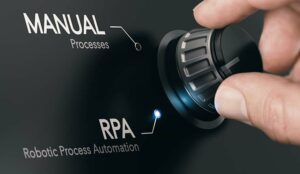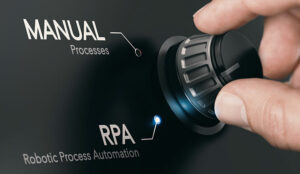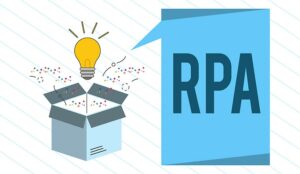Caren Buskmiller at Alvaria explains RPA and outlines three use cases.
The robotic process automation (RPA) market is expected to grow to $13.39 billion by 2030. To put that in perspective, a stack of 13 billion $1 bills would be about 883 miles high.
RPA application in the call centre is increasing in popularity because it increases productivity and improves security for any company, but especially those with contact centres. But first, let’s define RPA.
What is RPA in the Call Centre Environment?
Robotic process automation bots are used in contact centres to automatically perform repetitive tasks. Bots automate these tasks with or without an agent’s involvement.
What is the Difference Between Attended and Unattended RPA?
Attended RPA bots automatically pull up and fill in information on agents’ desktops to assist them with calls, chats and other forms of communication with customers.
Unattended RPA bots automatically perform tasks behind the scenes like retrieving, processing or importing data.
What are the Benefits of Unattended RPA?
1. Increased Productivity
Bots perform repetitive but necessary jobs like copying and pasting information between systems, allowing people to work on more complex tasks and projects.
2. Improved Quality and Accuracy
According to Deloitte, more than 90% of organizations say they’ve experienced improvements in quality and accuracy after implementing RPA.
3. Increased Data Security
RPA can reduce the risk of a data breach by transferring files securely while helping to maintain compliance with regulations like PCI DSS, SOC 2 Type 2 and more.
What are Use Cases of Unattended RPA in the Contact Centre?
Alvaria Automate, our new call centre robotic process automation tool, can retrieve, process, schedule, aggregate, import and/or export data. Get a better understanding of how it works in the following use cases:
Workforce Integration with Data Lake
Use Case: An airline manages call centres around the world and needs to keep track of their employees’ working hours and PTO. Each week, someone from IT must pull reports that detail how many hours employees have worked. It’s time-consuming and if the IT employee leaves, they must pass the responsibility to another employee.
Without proper tracking of employees’ PTO, they have the potential to overpay or underpay employees – exposing the company to legal risk.
Solution: With Automate, customers can pull employee schedule data out of Alvaria Workforce and into their own data lake to determine payroll, vacation or seniority. Additionally, the data can be scheduled to be moved regularly and in the required
format.
Value: Automate makes important data available without human intervention. This reduces IT overhead — without Automate, either someone is pulling reports or they’re building an API to connect Workforce with their data lake.
Data Movement from CRM to Shipping Software
Use Case: A retail company needs to pull data (names, addresses and phone numbers) from its customer relationship management (CRM) platform into its shipping software platform. When the data is moved, it must be converted into a different format so that the shipping software works properly.
Someone from IT wrote and maintains a script to convert data. It took hours to write and it’s difficult to maintain. A single change in one line of code could make the script stop working and would require troubleshooting.
Solution: Automate can act like an extract-transform-load (ETL) solution to transform the data and send it to the retail company’s shipping software.
Value: There are less scripts for IT to manage, which means more time to work on more valuable projects. The number of incorrect deliveries is reduced, which results in a happier customer base and a better impression of the company in the market.
Extract Data from Chat Software to Alvaria Compliant Customer Outreach
Use Case: A bank has a goal to reduce average handle time (AHT) in their contact centre by 10 percent. The website has a chatbot that collects information about prospects and customers. This chatbot can collect customer details like phone number, name and address.
If the bot is unable to resolve the customer’s issue, it asks the customer to select times they’re available to receive a call from the bank’s outreach team. Data is moved from the chat software to Alvaria CX so the agent who makes the call already knows the customer’s name, issue and what they’ve attempted to get it resolved.
A member of the IT team wrote scripts to connect the chat software and Alvaria CX. These scripts were time-consuming to write and are difficult to troubleshoot.
Solution: Automate can pull data from the chat software and group it into a summary of the past 15 minutes, 30 minutes or 60 minutes of interactions. That data can be written as a file in Alvaria CX.
Value: The bank doesn’t have to hire someone to create or maintain a custom integration between chat software and Alvaria CX – reducing IT overhead.
Author: Guest Author
Published On: 11th Aug 2022 - Last modified: 20th Oct 2023
Read more about - Guest Blogs, Alvaria, Robotic Process Automation (RPA)















